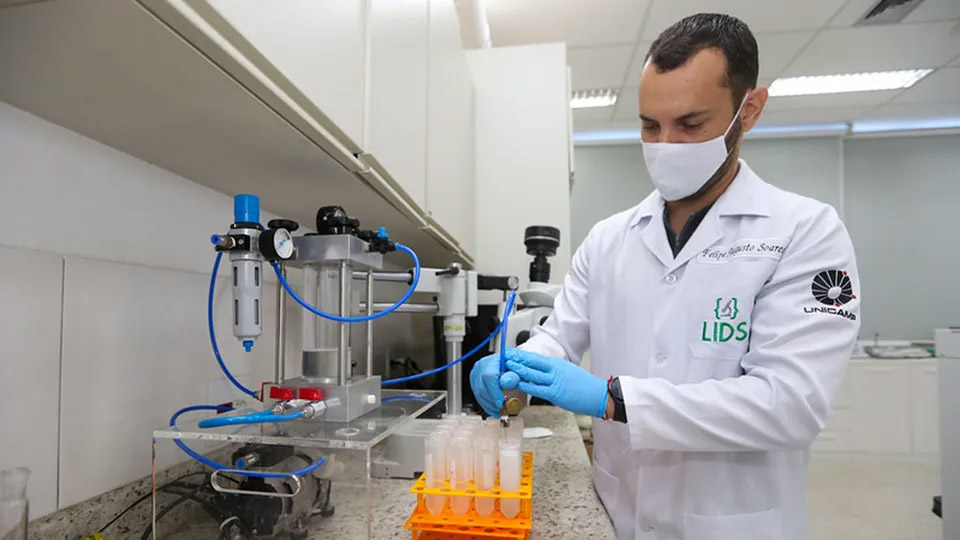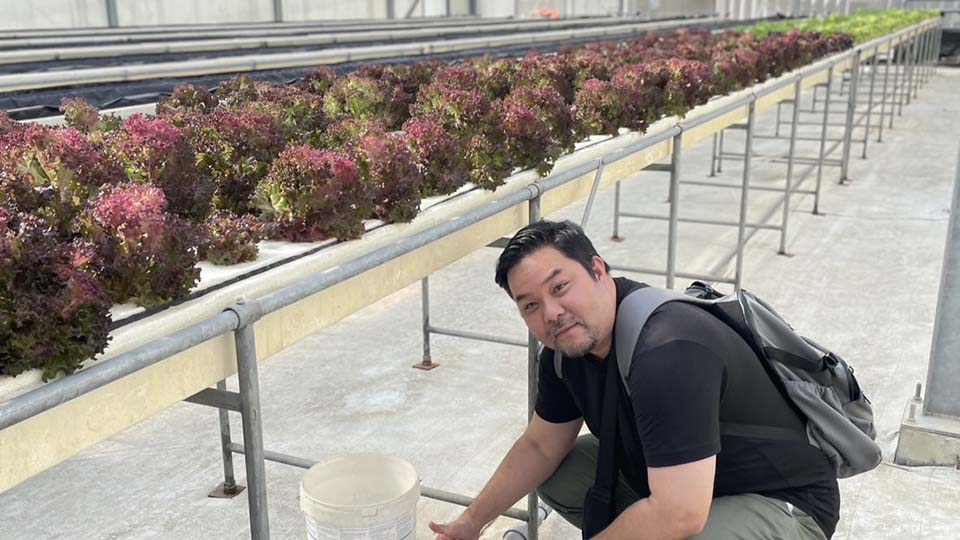Green Technology Book story: Solving Water Scarcity with a Little Help from the Sun
Water – an element necessary for life on earth. Seventy percent of earth is covered by water, 97% of which is seawater, which, in its unaltered state is unsuitable for drinking and irrigation – yet water scarcity, exacerbated by climate change, is a growing global issue. The sun — and the light, energy, and warmth it provides — is also essential for life on earth, though humans have yet to fully harness its potential and power.

Elemental Water Makers, a Netherlands-based start-up, has brought these two powerful elements together to use natural resources to turn seawater into fresh water.
Solar-Powered Reverse Osmosis Technology
“Producing Clean Water from Abundant Resources”
Sid Vollebregt, co-founder and CEO of Elemental Water Makers, got the idea for the technology on a surfing trip to Madagascar when he was still a student. He saw the scarcity of drinking water around him: the water was carried from far - usually by children - which in turn meant that they could not go to school. Sid tasted this water and noticed that it was actually salty. He learned that the life expectancy for people in the coastal town where he was residing was only around 50 years.
Sid then went surfing in the sea, and as he was drifting on his board - in the abundance of the sun in the vast ocean – he thought: how is it possible that people live without water when there is so much of it here? And that’s when the idea behind Elemental Water Makers was born. He went back to his studies at the University of Technology, Delft, in the Netherlands, and decided with his best friend to specialize in water treatment and sustainable energy technology. After graduating - with a focus on solar desalination - they started Elemental Water Makers in 2012 with the goal of making water available from the sun and the sea.
Off-Grid Solar-Powered Desalination Plant
The Technology — is suitable for use in off-grid rural areas.
The equipment is delivered in a container for speed and ease of installation and maintenance. Different sizes are available. Water production ranges from 3,800 to 100,000 liters a day, and can be used in individual households and in bigger hotels alike. The process utilizes reverse osmosis[1] technology, which is typically very energy intensive. However, by reusing residual energy from the brine (the saltier water flow), energy input and the number of solar panels required can be reduced. The company also provides a desalination technology that uses solar or wind energy to pump seawater into a tank positioned high on a hill. In this way, the system uses gravity to provide pressurized seawater for the reverse osmosis process.

Energy Consumption of Desalination
Today, 2.7 billion people face water scarcity, and the numbers keep rising as droughts resulting from climate change increase around the world. The effective use and reuse of water is becoming ever more important, as finding innovative solutions to respond to the increased need.
Water desalination is far from a new invention – it has existed for over 60 years. Sid explains that already 5% of the world’s population get their water supply through desalination, which amounts to around 100 million cubic meters of water per day. It’s a lot, and is expected to double in the next decade due to increasing water scarcity, but connotations around desalination are traditionally negative because it’s an energy intensive process.
“When you make water from the sea, you need a lot of energy and if the energy is expensive, it means water is expensive. And if the energy comes from fossil energy, it actually means that you’re contributing to climate change… which leads to water scarcity and droughts,” Sid explains.
A real “catch-22”: instead of solving the problem, it’s just displaced and the underlying cause remains. Another issue is the brine by-product that often has a high chemical content, which can be a source of pollution.
Sustainable Water Resources Management
The solution is energy efficient but demands up-front investment; after this, the operational cost is low. To a great extent, it’s a question of valuation of water, Sid says. That was the big challenge especially in the beginning – the uptake of long-term sustainable solutions over shorter-term, less expensive ones. Over the past decade, Sid has seen positive change as people are becoming increasingly aware of the challenges that comes with climate change and sustainable water management. There is also a heightened understanding of the need to help get the technology to the people who need it most.

Equitable Access to Safe Drinking Water
Using existing natural resources to find sustainable solutions to climate change adaptation – it seems like such an evident thing to do. So why has this not been done before?
Sid says that there are a few reasons for this. Water is a conservative sector in a global landscape with many stakeholders - change is slow. Whether we realize it or not, water is often closely tied to politics, especially in developing regions: the person who has the water has the power. There may also be resistance to change- Systems and practices that have previously worked on a large scale have become engrained, and tariffs were set in a certain way with a specific infrastructure in place. Barriers can also relate to permits or uptake of new technologies. But change is coming, as it must, according to Sid. There is a greater realization that we live in an uncertain world, with climate change and heightened energy prices.
Of course, Sid says, if we look at it more broadly, water management and water scarcity are not new on the global agenda, but perhaps their imminent importance was not previously appreciated. Fortunately, the understanding is evolving and there is a growing recognition that innovative solutions such as solar desalination are needed.
Clean Water and Sanitation for All
Water and energy sectors are increasingly examined together, according to Sid, this is important. SDG 6[2] on ensuring availability and sustainable management of water and sanitation for all is one of the most interconnected goals. Essentially, Water also means food because 70% of fresh water is used for food cultivation. So access to food and access to water go hand in hand. Water is also closely linked to public health issues including diarrhea, cholera outbreaks, and the impacts of contaminated groundwater.

The users of the Elemental Water Maker’s technology are diverse – essentially anyone living in a coastal region with a water demand of 2000 – 100 000 liters per day is a potential user. The company currently serves approximately 100.000 persons, but it’s their goal to grow to 10 million.
Elemental Water Makers is motivated to contribute to SDG 6. About 200 million people live in coastal areas who could all benefit from the technology. However, they may not themselves have the financial possibility to buy and implement it– so Elemental Water Makers helps with financing by working with NGOs who have local connections directly to the communities, facilitating the permit process and ensuring that all stakeholders are onboard.
The company also works with emergency resilience and response. It offers a portable desalination unit for temporary application that can be used in a cyclone or a sudden drought event. It can be packed in the car, taken on a plane or carried for an emergency response.
New technologies hold promises to solve the Global Water Crisis
Despite the abundance of water resources on earth, water scarcity is a growing and pressing challenge. How will the world address it? “We can reuse water, we can recycle water and we can augment our resources, there’s technologies for all of this,” Sid said, adding, “wastewater treatment, capturing water from air, making water from the sea, using the sunshine… The technology is out there and it’s proven. So it’s not a matter of a technological problem, it’s more a matter of valuing water and making sure that these technologies get to the right places. There’s a lot of hope.”

WIPO GREEN Database of Innovative Technologies and Needs
The is a free, solutions oriented, global innovation platform. It connects needs for solving environmental or climate change challenges with their solutions. The database consists of user uploads of needs and solutions, green technology patents from the WIPO Patentscope database, imports from select partner organizations, relevant knowledge material, and relevant expert profiles.
The Green Technology Book
The WIPO Flagship publication the Green Technology Book is a digital-first publication aiming to put innovation, technology and intellectual property at the forefront in the fight against climate change. The inaugural edition of this annual publication focused on available solutions for climate-change adaptation to reduce vulnerability as well as to increase resilience to the impacts of climate change. The 2023 edition of the Green Technology Book will focus on climate change mitigation technologies. It is currently in the making and is planned for launch at UNFCCC COP28. WIPO GREEN is currently looking for technologies.
If you have an innovation and want it to be considered for the Green Technology Book, please go to the WIPO GREEN database and upload it. All technologies will be visible in the database and available for searching and matchmaking. Uploading to the WIPO GREEN database is free.



